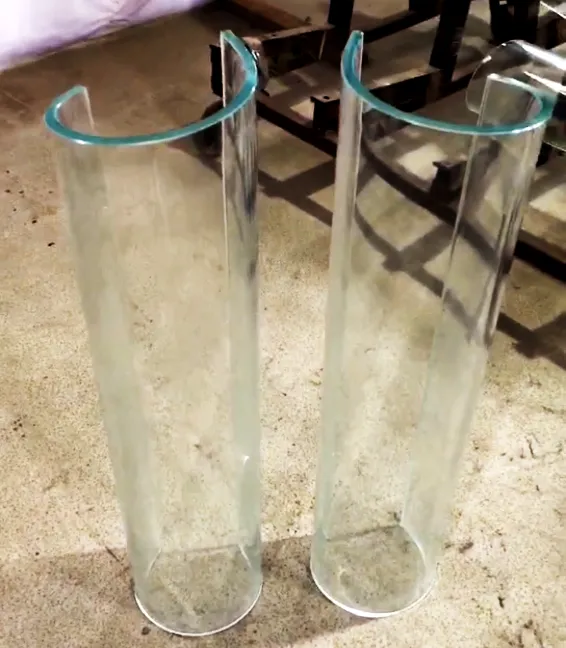Dec . 22, 2024 09:12 Back to list
frosted to clear glass
From Frosted to Clear Glass A Transformation of Aesthetic and Functionality
Glass has played a pivotal role in architecture and design for centuries, offering both beauty and practicality. Among the various types of glass, frosted glass holds a unique position, prized for its ability to diffuse light while providing privacy. However, the transition from frosted to clear glass is more than just a shift in transparency; it represents a transformation in aesthetic appeal, functionality, and the experiences it creates in space.
Frosted glass is created through a process that etches or sandblasts the surface, resulting in a translucent material that obscures visibility. This property makes it highly sought after for various applications, especially in settings that require a degree of privacy without sacrificing natural light. Common uses include bathroom windows, shower doors, office partitions, and even decorative elements in homes and commercial spaces. The soft, diffused light that frosted glass allows can soften the overall ambiance of a room, creating a serene and tranquil environment.
However, as design trends evolve, there is a growing appreciation for clear glass, which provides its own unique advantages. Clear glass is synonymous with transparency and openness, offering an unobstructed view of the surrounding environment. This quality can create a sense of spaciousness and invite the outdoors in, making it a popular choice in modern architecture. The shift from frosted to clear glass often signifies a move toward minimalism—a design philosophy that emphasizes simplicity and function.
In residential environments, clear glass can transform the dynamics of a space. Large glass windows and doors can flood interiors with natural light, effectively blurring the lines between indoor and outdoor areas. This has become particularly desirable in homes that prioritize connection with nature, as panoramic views enhance the living experience. In contrast to the muted tones of frosted glass, clear glass captures the vibrant colors and textures of the outside world, enriching the aesthetic experience of a room.
frosted to clear glass

In commercial spaces, the choice between frosted and clear glass can impact the atmosphere and functionality of an office. While frosted glass partitions offer privacy for meetings and coworking spaces, clear glass can facilitate an open office layout that encourages collaboration and communication among teams. Clear glass walls can create a sense of unity in a workspace, allowing employees to engage visually and promote a culture of transparency and inclusivity.
Moreover, clear glass has become a canvas for artistic expression. Architects and designers can manipulate light and form through the strategic use of glass in structural elements, facades, and installations. The interplay of light through clear glass can enhance the architectural narrative of a building, drawing attention to its design features and materials. This artistry, paired with the fundamental functionality of glass, showcases how the transition from frosted to clear glass can evoke different emotions and experiences within a space.
Another significant factor to consider is the advancement in technology and glass manufacturing techniques. Modern innovations have paved the way for new types of glass that can provide the benefits of both frosted and clear glass. For example, switchable smart glass can transition from opaque to transparent at the touch of a button, allowing users to control privacy and light levels in real-time. This technological progression highlights how the future of glass will continue to evolve, combining aesthetics and functionality in unprecedented ways.
Ultimately, the shift from frosted to clear glass is more than a mere aesthetic choice; it reflects deeper trends in design, lifestyle, and technological innovation. As we embrace the clarity and openness that clear glass offers, we also acknowledge the ongoing importance of privacy and intimacy that frosted glass provides. The choice between the two is no longer simply about transparency; it's about creating spaces that cater to human experience—balancing visibility with privacy, light with shadow, and chaos with calm.
In conclusion, whether one prefers the serene diffusion of frosted glass or the bright openness of clear glass, both materials serve as powerful tools in the hands of architects and designers. As we continue to explore the potential of glass in our living and working environments, we are reminded that every choice we make contributes to the atmosphere, functionality, and emotional resonance of our spaces. The transformation from frosted to clear glass represents a journey in design—one that harmonizes aesthetics with the human experience.
-
Safety and Style with Premium Laminated Glass Solutions
NewsJun.24,2025
-
Reinvents Security with Premium Wired Glass
NewsJun.24,2025
-
Premium Float Glass Line for Modern Architecture
NewsJun.24,2025
-
Low Emissivity Glass for Energy-Efficient Architecture
NewsJun.24,2025
-
High-Performance Insulated Glass Solutions for Modern Architecture
NewsJun.24,2025
-
Elevates Interior Style with Premium Silver Mirror
NewsJun.24,2025
Related PRODUCTS














